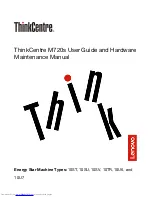
Removing bubble pack from PCB
Packing PCBs in foam-lined box
7,000V
5,000V
20,000V
11,000V
26,500V
21,000V
Preventing ESD
equipment damage
Many electronic components are sensitive to ESD. Circuitry design and structure determine the degree of
sensitivity. To prevent damage to electronic components and accessories, observe the following
packaging and grounding precautions:
●
Transport products in static-safe containers such as tubes, bags, or boxes, to avoid hand contact.
●
Protect electrostatic parts and assemblies with nonconductive or approved containers or
packaging.
●
Keep electrostatic-sensitive parts in their containers until they arrive at static-free stations.
●
Place items on a grounded surface before removing them from containers.
●
Before handling or touching a sensitive component or assembly, ground yourself by touching the
chassis.
●
Avoid contact with pins, leads, or circuitry.
●
Place reusable electrostatic-sensitive parts from assemblies in protective packaging or
nonconductive foam.
Personal grounding
methods and
equipment
Use the following items to help prevent ESD damage:
●
Wrist straps — These are flexible straps with a maximum of one megohm ± 10% resistance in the
ground cords. To provide a proper ground, wear the strap against bare skin. The ground cord must
be connected and fit snugly into the banana plug connector on the grounding mat or computer.
●
Heel straps, toe straps, and boot straps — These can be used at standing computers and are
compatible with most types of shoes or boots. On conductive floors or dissipative floor mats, use
them on both feet with a maximum of one megohm ± 10% resistance between the operator and
ground.
Static shielding
materials
Static shielding materials provide the following levels of protection.
Method
Antistatic plastic
Carbon-loaded plastic
Metalized laminate
Voltage
1,500V
7,500V
15,000V
Grounding the work
area to prevent static
damage
●
Cover the work surface with approved
static-dissipative material. Use a wrist strap
connected to the work surface, and properly
grounded tools and equipment.
●
Use static-dissipative mats, foot straps, or
air ionizers to give added protection.
●
Handle electrostatic-sensitive components,
parts, and assemblies by the case or PCB
laminate. Handle them only in static-free
work areas.
●
Disconnect power and input signals before
inserting and removing connectors or test
equipment.
●
Use fixtures made of static-safe materials
when fixtures must directly contact dissipative
surfaces.
●
Keep work area free of nonconductive
materials, such as plastic assembly aids and
Styrofoam.
●
Use field service tools (such as cutters,
screwdrivers, and vacuums) that are
conductive.
Recommended ESD
prevention materials
and equipment
●
Antistatic tape
●
Antistatic smocks, aprons, and sleeve
protectors
●
Conductive bins and other assembly or
soldering aids
●
Conductive foam
●
Static awareness labels
●
Wrist straps and footwear straps providing one
megohm ± 10% resistance
●
Material-handling packages
●
Conductive plastic bags
38
Chapter 3 Component replacement information and guidelines
Содержание Z1 G2
Страница 1: ...HP Z1 G2 Workstation Maintenance and Service Guide ...
Страница 4: ...iv About this guide ...
















































